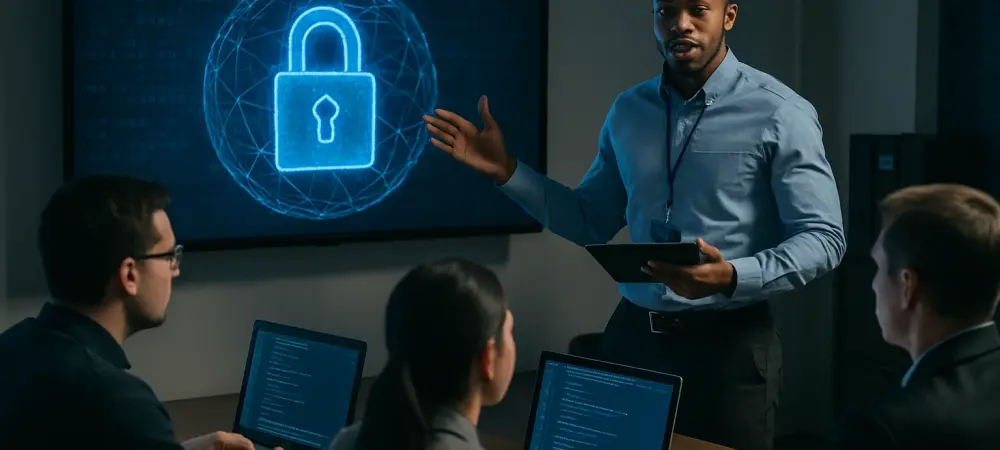I’m thrilled to sit down with Dominic Jainy, a seasoned IT professional whose expertise spans artificial intelligence, machine learning, and blockchain. With a passion for leveraging cutting-edge technology to solve real-world challenges, Dominic has been at the forefront of innovative solutions across industries. Today, we’re diving into his insights on a groundbreaking cybersecurity startup called Fable, which he has closely followed. We’ll explore how AI is transforming the way we tackle human error in cybersecurity, the importance of personalized training, and the unique approaches that set new players apart in this critical field. Let’s get started.
What drew your attention to Fable, and why do you think their mission to address human error in cybersecurity is so critical right now?
I’ve been tracking Fable since they emerged from stealth, and what really caught my eye is their focus on human error as the weakest link in cybersecurity. We’ve seen countless breaches—some costing hundreds of millions—stem from simple mistakes like password resets or phishing scams. Fable’s mission resonates because it’s not just about building better tech; it’s about empowering people. In an era where cyberattacks are increasingly sophisticated, blending AI with human behavior analysis feels like the next frontier. We can’t keep relying on generic training emails that no one reads. Fable’s push for personalized, actionable guidance is exactly what organizations need to close that vulnerability gap.
How do you see AI reshaping cybersecurity education, especially with platforms like Fable that prioritize a tailored approach?
AI is a game-changer in cybersecurity education because it can analyze vast amounts of data to pinpoint individual risks. With Fable, for instance, their system identifies which employees are most vulnerable—maybe someone who skips multi-factor authentication or clicks on suspicious links. Then, it delivers custom content, like a quick video or tip, right when they need it. This isn’t just a one-size-fits-all lecture; it’s a dynamic, adaptive learning experience. AI can also scale this across thousands of employees, which is something traditional methods can’t match. I think this tailored approach boosts engagement and retention—people are more likely to act on advice that feels relevant to their daily work.
What are some of the biggest flaws in traditional cybersecurity training, and how does an AI-first strategy address those shortcomings?
Traditional cybersecurity training often feels like a checkbox exercise—send out a generic email, host a yearly seminar, and hope for the best. The problem is, it’s rarely engaging or specific to an employee’s role. Most people tune out because the content doesn’t apply to them or it’s just too dry. An AI-first strategy, like what Fable employs, flips this on its head by personalizing the experience. It targets specific behaviors, monitors progress, and adjusts in real-time. Plus, it integrates into tools employees already use, so it’s not another task on their plate. This makes security education feel less like a burden and more like a helpful nudge, which I believe is far more effective in changing habits.
Can you explain the significance of integrating security tools into everyday platforms like Slack or email, and how that might impact employee behavior?
Integration into platforms like Slack, Microsoft Teams, or email is huge because it meets employees where they are. Cybersecurity training often fails when it’s a separate, clunky process that disrupts workflow. By embedding tips or alerts directly into these tools, it lowers friction—employees don’t have to log into another system or sit through a long module. For example, a quick pop-up on Slack reminding someone to double-check a link before clicking can make a big difference in the moment. It also normalizes security as part of their daily routine rather than an afterthought. From what I’ve seen, this seamless approach can significantly improve compliance and awareness without overwhelming staff.
Fable has worked with diverse sectors like healthcare, financial services, and even political organizations. How do you think their personalized approach adapts to such varied needs?
The beauty of a personalized, AI-driven approach is its adaptability. In healthcare, for instance, employees might need training on protecting sensitive patient data against ransomware, while in financial services, the focus could be on phishing scams targeting high-value transactions. For political organizations, especially during election cycles, the stakes are even higher with risks like deepfake scams or targeted disinformation campaigns. Fable’s ability to tailor content—whether it’s a short video or a specific briefing—means they can address these unique challenges head-on. It’s not just about the industry; it’s about the individual’s role and behavior within that context. That level of customization is what makes their solution stand out across such diverse sectors.
Looking ahead, what is your forecast for the role of AI in cybersecurity education over the next few years?
I’m incredibly optimistic about AI’s role in cybersecurity education. Over the next few years, I expect we’ll see even deeper integration of AI into everyday tools, making security second nature for employees. We’ll likely move beyond just identifying risks to predicting them—AI could anticipate potential human errors before they happen based on behavioral patterns. I also think we’ll see more immersive training, like VR simulations of phishing attacks, powered by AI to mimic real-world scenarios. Platforms like Fable are just the beginning; they’re paving the way for a future where cybersecurity isn’t a separate discipline but a seamless part of how we work. If we can get this right, we might finally stay a step ahead of the attackers.

